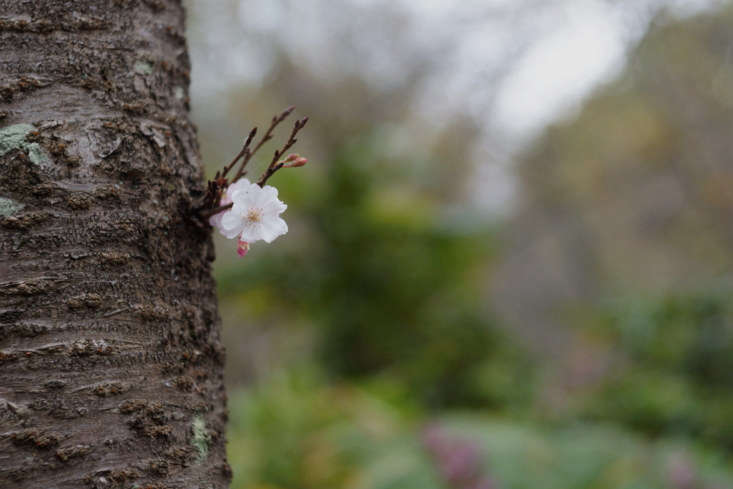Thank you flowering trees, for alerting us to the fact that it is definitely spring. We might have missed that development if not for the sudden, glorious explosion of pink and white and purply-tinged blossoms.
What is the prettiest flowering tree? If your answer is “cherry tree,” you are in luck—the high season is about to begin. If you’re in New York City this month, the Brooklyn Botanic Garden will be hosting its annual cherry blossom festival, Sakura Matsuri 2019, starting April 27. There you will see more flowering cherry trees than you ever imagined existing. And take our cherry trees cheat sheet with you so you don’t miss seeing the best ones.
If your thoughts are turning toward the possibility of planting your own spring-flowering tree (and whose aren’t in April?), then read on to find out about which of our favorites would be best for your garden.
Cherry Trees

“Most flowering cherries are Prunus hybrids and cultivars originating in Japan. One of the best ways to familiarize yourself with different cherry habits and bloom times is to visit a local botanic garden or arboretum in early and mid-spring,” notes our contributor Marie Viljoen. “There is no lovelier place to spread a blanket, lie on your back and gaze up at the layers of petal glory.”
For more help picking the right flowering cherry tree for your garden (and growing and care tips) see Cherry Trees 101: A Field Guide.
Magnolia Trees

“Early flowering magnolias come with a warning label, at least for people living in the north: They need shelter without being shaded, they need the right soil, and they can become enormous,” writes our UK contributor Kendra Wilson. “The trade-off is extravagantly pretty flowers, whether globular, ribboned, or waving like handkerchiefs.”
See more at Magnolia Trees 101: A Field Guide.
Plum Trees

How to tell the difference among flowering trees? If you are not sure what your eyes are feasting on, look closely at the petals. Plums have rounded petals. Cherry petals each have a tiny cleft at the tip (and peaches, blooming in between, have teardrop-shaped petals). Plum blossoms also grow tightly against the branches, while cherries have noticeable stems.
For a list of our favorite cultivars of plum trees and for planting and care tips, see Gardening 101: Plum Trees.
Dogwood Trees

The low-down on Cornus from Kendra: “Flowering dogwood (C. florida) can be ‘just the usual’ white or tinged pink, or it can be truly spectacular, such as C. controversa or C. alternifolia: garden giants with tiers of branches like a wedding cake.”
And don’t overlook creeping dogwood or (C. canadensis), a dramatic ground cover.
See all our favorite flowering dogwood tree cultivars (and suggestions on how to pick the right one for your garden) at Dogwood Trees 101: A Field Guide.
Apple Trees

Dwarf or semi-dwarf varieties of apple trees are best-suited for home gardens (dwarf trees perform well in containers, as well). Depending on the cultivar, an apple tree’s flowers may be pink or white. Against glossy green leaves, either color is lovely—and apple trees’ gnarly silhouettes make them beautiful landscape elements year-round. Read more about how to plant and care for Malus at Apple Trees 101: A Field Guide.
Lemon Trees

OK, we know it’s a citrus tree and technically not like the others. But what list of flowering trees is complete without lemon trees? Think of the delicately perfumed white blossoms.
Lemon trees are grateful sun worshippers. Give these citrus at least eight hours a day, preferably with some humidity, and they’ll (eventually) reward you. If you live in a climate that’s too cold to grow lemon trees outdoors year-round, consider putting yours into a pot and bringing it indoors for the cold months. Read more planting and care tips at Lemon Trees 101: A Field Guide and read 5 Secrets to Keep a Lemon Tree Alive Indoors in Winter.
Tree lovers, take note. You can use our curated design guide, Trees 101, to learn everything you need to know about more of our favorite trees including Crape Myrtle Trees, Japanese Maple Trees, Pear Trees, and Birch Trees. Whether you’re designing a landscape from scratch or planting a single specimen tree to add curb appeal, our guides offer tips on when (or if) to expect a particular tree to bloom, what size it will reach at maturity, how much water it needs, its average lifespan, and whether it’s evergreen or deciduous.








Have a Question or Comment About This Post?
Join the conversation